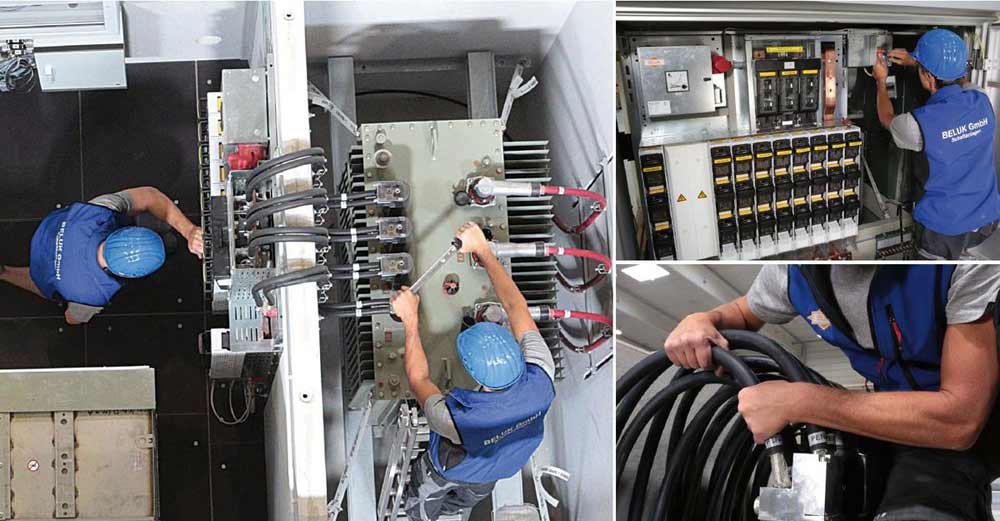Company Snapshot
Industry: Pharmaceutical Manufacturing
Locations: Multiple sites across Germany
Employees: 30,000+ (global)
Use Case: Gemba Walks for quality assurance in laboratory environments
Tool Replaced: Paper-based walk documentation and Excel logs
Time Savings: ~50% reduction in post-walk documentation effort
About the Company
One of Germany’s largest pharmaceutical manufacturers, this global player is renowned for its stringent quality systems, regulatory excellence, and commitment to continuous improvement. With decades of experience in delivering life-saving medications, the company upholds rigorous quality standards in every process, particularly in its laboratory and production facilities.
To support operational excellence, the company launched a digitalization initiative aimed at streamlining internal processes, starting with one of the most fundamental and high-impact activities in the quality unit: the Gemba Walk.

The Challenge: Gemba Walks That Created More Follow-Up Work Than Insight
The quality team relied heavily on Gemba Walks to monitor cleanliness, compliance, and process deviations in their laboratories. But despite the importance of these inspections, their documentation system had become a burden.
Walks were tracked manually. Observations were noted on printed forms, which then had to be typed up and emailed to responsible stakeholders. Photos were taken separately (often on personal devices) and manually added later. Action items were tracked in shared spreadsheets, disconnected from the original finding. It was a fragmented process, prone to delays and miscommunication.
“Every Gemba Walk was valuable in terms of insight,” said the project lead. “But the process of capturing that insight, and turning it into follow-up, was clunky and time-consuming. In many cases, the documentation effort took longer than the walk itself.”
Because follow-up actions were assigned in separate tools (or not at all), it was difficult to verify whether an issue had been resolved. Filtering findings by lab area, responsible person, or status was impossible without extra effort. And during audits, preparing structured, traceable documentation became an administrative headache.
For a company that prides itself on data integrity and real-time response, the Gemba Walk process didn’t measure up.
Searching for the Right Tool
When the company’s quality lead began searching for a smarter way to manage Gemba Walks, she wasn’t looking for just another digital checklist. She wanted a system that:
- Enabled on-the-spot documentation
- Allowed photo capture and annotation during the walk
- Assigned corrective actions immediately
- Offered reporting and filtering options for post-walk analysis
- Was easy enough for anyone on the team to adopt
After researching multiple tools, she came across flowdit, a mobile-first platform originally developed as firstaudit. What stood out wasn’t just the features, but the fact that flowdit had been designed for regulated industries, with a clear understanding of process transparency, documentation standards, and usability in environments like pharma.

Implementing flowdit: Turning Every Gemba Walk Into an Immediate Action Plan
Once implemented, flowdit quickly became the go-to tool for structured Gemba Walks in the quality unit.
Each walk was now created as a digital template, tailored to the specific lab type and inspection frequency. The team could begin their Gemba Walk on a tablet or smartphone, logging observations directly into the app as they moved through the space. Findings were documented in real time, with the option to attach photos, annotate images, and record voice notes on the go.
Crucially, actions could be assigned immediately, with deadlines and responsibilities linked to specific findings. No more emailing photos or chasing stakeholders. Everything was documented, tracked, and visible in one central platform.
The intuitive interface made it easy for all 25 users in the Quality Unit to adopt the system. And as interest grew, additional departments, including logistics and warehouse teams, began testing the app for their own walk processes.
“flowdit completely changed how we manage our Gemba Walks,” the quality manager said. “Instead of spending hours documenting and distributing findings after the walk, everything happens during the walk. We can focus our energy on solving problems instead of processing paperwork.”
Results: Less Friction, More Follow-Through
The impact of the switch was immediate. The team estimates that flowdit reduced post-walk documentation time by around 50%, freeing up time for higher-value activities. Action items were now traceable from creation to completion. Managers could filter findings by area, responsible person, or status and quickly generate visual reports for meetings or audits.
What was once an isolated documentation step had become a real-time improvement engine.
The digital process also helped reinforce a stronger sense of ownership. When a technician logs an issue and assigns a follow-up during the walk, accountability is built into the process. There’s no ambiguity about who needs to act, or when.
Even more importantly, the system encouraged cross-functional adoption. As word spread about the gains in quality and speed, other departments began requesting access to flowdit. A second site is already testing the platform for its own use, with expansion under review.
Internally, the transition to digital was smooth. Because users were involved early in the process and trained hands-on, there was no resistance to change.
“We had no pushback,” the project lead confirmed. “People welcomed the simplicity. It made sense from day one.”
Looking Ahead
With flowdit now fully embedded in the quality team’s day-to-day operations, the company is exploring additional use cases, from environmental walkthroughs to cross-departmental audits. The adaptability of the platform means each team can configure their own templates, while still maintaining company-wide consistency and traceability.
For a pharmaceutical manufacturer under strict QMS requirements in Pharma, where documentation, accountability, and speed are non-negotiable, flowdit proved to be the missing link in the continuous improvement chain.
“We’re still doing Gemba Walks,” the quality manager said. “But now, they’re smarter. They’re faster. And they actually lead to results.”
Is your team still documenting Gemba Walks on paper or juggling screenshots and spreadsheets?




